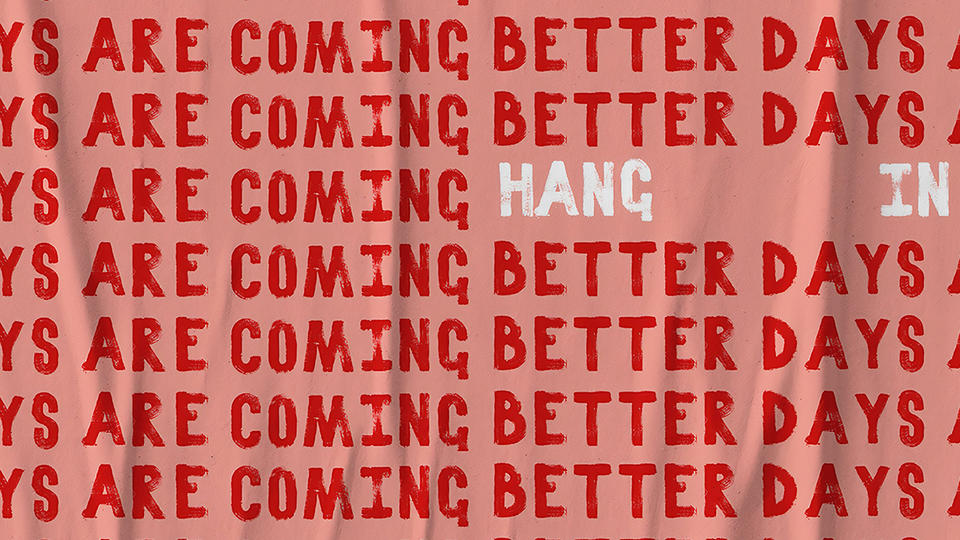Survival Essentials
For anyone rocked by Harvey’s life-upending losses: Houston’s refugees and their experiences can be a monumental resource.


By Claudia Kolker
For Anyone Rocked By Harvey’s Losses, Houston-Based Refugees And Their Experiences Can Be A Monumental Resource
"Do you think we can get pho?” my daughter asked. Lucky to escape Harvey unscathed, we were venturing out for the first time since the deluge hit Texas. There in our favorite noodle shop, fragrant with fish sauce and basil, it was possible to imagine a Houston untouched by disaster.
But even before Hurricane Harvey, that would have been an illusion. Disaster is what brought thousands of Houstonians here in the first place. This is a city of survivors.
Houston is by now well known as the country’s most diverse city. But it is more than an immigrant hub; it’s America’s No. 1 magnet for refugees. And for anyone rocked by Harvey’s life-upending losses, those refugees and their experiences can be a monumental resource. Many are facing the flood’s ravages alongside their neighbors right now, but they are distinct because every refugee lost everything once before. And then they rebuilt.
After 20 years reporting and living in my adopted city, I've come to feel awe at its once-displaced population. Since the 1970s, more than 70,000 refugees from 78 countries have settled in Houston, all fleeing versions of the chaos unleashed by Harvey. Most lost status, work and community, along with the possessions, snapshots and love letters that tell our life stories.
They may not fit the profile you expect. In recent years, they’ve been arriving from Bhutan, Burma, Iraq, Afghanistan and Cuba. During the 1980s, they poured into the city to escape death squads and guerrilla war in El Salvador and Guatemala. And in the 1970s, in the biggest influx of displaced persons in its history, Houston became home to tens of thousands of Vietnamese.
What, I wondered over my Vietnamese coffee, might they tell their fellow Houstonians right now? Mechelle Tran, the pho restaurant's 37-year-old owner, had an immediate answer. “I came here when I was 5. I have trauma amnesia, but I grew up hearing the stories,” she said. After weeks at sea, in nights so dark that waves, sky and rain were one sheet of blackness, the family landed in refugee camps in Malaysia and the Philippines. “There were a lot of parallels to Houston right now,” Tran told me. “A bottle of fish sauce was like liquid gold, because all you had were processed packaged foods. Nothing real.” Living in chronic uncertainty, sleeping on cots, her parents had zero control of their future, not just for months, but for years, until a church linked them to a host family in Houston.
Damaging as it was, the displacement changed her for the better, Tran believes. For one thing, because Houston’s community helped them start over, she and her peers are almost fanatical about community service. In addition to a work phone, she totes a separate cell for constant charity work. Last week, when her restaurant had no more food to give, Tran orchestrated a T-shirt drive for drenched Houston Police Department officers.
Seeing her parents' struggle to protect her also forged an iron resolve to honor their efforts. “You had no choice, no options, no falling back,” Tran said. “It’s grit. The kids whose parents have lost everything in the flood will see their parents rebuilding. They will have that little bit in them that says, ‘I saw Mom and Dad do this.’”
Flood survivors may also find surprising strength in seeing themselves as one striving community. Benito Juarez, who oversees immigrant affairs for the city, told me that the Latino, South Asian, African, and other refugees who settled here make it a point to band together.
“A sense of solidarity is built into their situation,” Juarez said. In most cases, the first group to arrive guides later groups through their new way of life, and helps newcomers find work and housing.
For Harvey's flood survivors, that could translate to those recovering fastest sharing services and emotional help with the hardest hit.
Taking action, especially on behalf of someone else, is a lifeline, Yani Keo, a well-known Cambodian refugee leader, believes. Keo lost more than 60 family members to the genocidal rule of Pol Pot.
Doing, Keo told me a few years ago, means surviving. So she has pushed even the most dazed newcomers to volunteer, once prodding a reluctant Afghan refugee to the airport so he could welcome an even more recent arrival.
Pitching in for others, Keo said, gives an uprooted life meaning again. Research backs this up. Post-traumatic growth, the subject of a flourishing academic field, suggests that in some circumstances, trauma builds strength. It’s not always the case, but taking action, and seeing a model of someone else's resilience, make positive change more likely.
As I sipped the last of my Vietnamese coffee, Mechelle Tran added one more thing. No one chooses to be wrenched from home, she said. But flood survivors now overwhelmed by their future may have more power than they realize.
“The minute your foot touched that boat or canoe, you made a decision,” Tran said. “You made the decision to fight.”
Claudia Kolker is the editor of Rice Business Wisdom and author of "The Immigrant Advantage: What We Can Learn From Newcomers To America About Health, Happiness and Hope" Originally published in the LA Times.
Never Miss A Story
Keep Exploring
Running On Empty
How Hurricane Harvey affected the oil supply chain, from production to distribution.


By William M. Arnold
How Hurricane Harvey Affected The Oil Supply Chain, From Production To Distribution
This article originally appeared in The Hill and is reprinted here with permission.
Harvey, the "500-year storm," has destroyed homes across coastal Texas as far as 50 miles inland. The loss of life is not fully known, but growing. The nation's attention has quite rightly been on the human dimension.
Harvey has also disrupted energy infrastructure, oil production, refinery processing and supply chains — perhaps more than has been reported.
Just as the nation enters the Labor Day weekend, one of the heaviest travel times of the year, shortages — real and anticipated — are resulting in price spikes for gasoline. Prices at the pump tend to rise quickly, but drop slowly.
Several factors have combined to put pressure on production, refining and distribution.
As Harvey approached, offshore production was shut in as crews were moved to safety and managers took operational measures to avoid environmental damage.
The "glut" of oil in storage was being drawn down well before the storm, normally an indicator of price increases. This was facilitated by Congress when it lifted the ban on oil exports 20 months ago.
The concentration of refineries along the Gulf Coast makes the nation vulnerable to the superstorms we've had in recent years — Allison, Katrina, Ike and now Harvey. An estimated 25 percent of refining activity was halted to protect people, facilities and the environment. Some refineries in Texas are returning to operation while others in Louisiana could be at risk.
Add geopolitical risk from the crisis in Venezuela and the volatility grows. Many Gulf Coast refineries are configured to process heavy crude oil, which has low viscosity and high sulfur content. Venezuela is a major supplier of that grade.
American production has grown dramatically in recent years but much of America's new production is light, "sweet" oil. Billions of dollars would be required to reconfigure these facilities.
Getting crude oil to refineries and product to market requires the availability of tens of thousands of miles of interdependent pipelines, some of which have been impacted.
Oil production increases are a function of the "rig count," and that may flatten out as a result of the storm and its aftermath.
The supply chain of this industry is complex, and increasingly dependent on "just-in-time" availability of resources from crews to sand, water, chemicals, pipe and sophisticated equipment. The flooding of equipment and supply yards, as well as highways along the Gulf Coast, may interrupt the steady growth of oil production from the Permian Basin of West Texas to the Bakken fields of North Dakota.
A friend visiting North Dakota during the storm heard stories of how flooded equipment yards along the Gulf Coast were impacting operations 1,500 miles to the north. North Dakota counts on the summer months to get equipment into place to maintain operations.
The human dimension of the storm includes thousands of people in the oil and gas industry. When the media reports flooding in West Houston, they may be talking about the homes of staff at Shell, ConocoPhillips, BP, Halliburton and the hundreds of companies that support them. It will be challenging for them to get fully into gear after the Labor Day holiday.
The good news is that the energy industry has proved that it's resilient. Challenges from technological changes to the price collapse have tested the mettle of the industry. The more nimble players have found and implemented solutions that seemed unimaginable a few years ago.
Bill Arnold was a professor in the practice of energy management at Rice University’s Jones Graduate School of Business. Previously, Arnold was Royal Dutch Shell's Washington director of international government relations and senior counsel for the Middle East, Latin America and North Africa.
Never Miss A Story
You May Also Like
Keep Exploring
Do The Right Thing
Why some companies rally to help in a disaster.


By Jennifer (Jennie) Latson
Why Some Companies Rally To Help In A Disaster
Rooms normally rent for about $120 a night at a Best Western near Corpus Christi — but when Hurricane Harvey's storm surge hit, prices surged, too: to more than $320, as Austin's KXAN TV crew discovered.
Last week, Texas Attorney General Ken Paxton told CNBC he'd received more than 500 complaints of price gouging related to Harvey, including quadrupled hotel room rates, $99 cases of water and gas prices of up to $10 a gallon.
Meanwhile, other businesses took a more compassionate approach. Houston institution Gallery Furniture turned its massive showrooms into shelters, while Uber offered evacuees free rides. Airbnb, the international short-term rental service, enlisted the aid of more than 1,000 hosts offering free temporary housing. Grocery chain H-E-B distributed supplies to the hardest-hit areas.
Along with food, water and shelter, some companies offered free access to that most precious of commodities in a crisis: information. Media outlets including The New York Times, the Washington Post and the Chronicle dropped their paywalls; Comcast created 53,000 WiFi hotspots in and around Houston; and AT&T waived data overage fees for customers in the area.
So why do some businesses turn their backs on customers during disasters while others come to their rescue? And what are the consequences of companies' behavior in times of trouble?
There's no easy answer to the question of why some companies help out while others stand idly by — or worse. But at least some of it likely comes down to the moral views of a company's key decision-makers, according to Isaac Smith, an assistant professor of management in the Samuel Curtis Johnson Graduate School of Management at Cornell University.
"How broadly do they construe the scope of their moral obligations? Are they only morally obligated to have concern for the bottom line? Or do their moral obligations extend beyond shareholders to employees, customers and the communities in which they do business?" Smith asked. "The broader a given decision-maker's scope of moral concern, the more likely they will make a decision to help."
In times of crisis, these decisions make more impact than normal: People see them as indicators of what corporate leaders are truly made of, and justifiably so, says Anastasiya Zavyalova, an assistant professor of strategic management at Rice University's Jones Graduate School of Business.
"Catastrophes tend to bring out people's true character. And companies' leaders are a case in point," she said.
"The decisions a CEO makes during such tragedies as Harvey are likely consistent with the decisions he or she will make as a company executive. What is important for us, the stakeholders, is to pay attention to the choices firms made during Harvey and figure out if the company's actions are consistent with our beliefs and goals."
Many corporate leaders have come to the aid of the hurting Houston area in recent days. By Friday afternoon, CNN reported, companies had pledged more than $141 million in Harvey relief.
In general, more companies want to help than people might expect, Smith said.
"Despite the pervasive perception that businesses are strictly driven by self-interest and profit-maximization, there are countless examples of companies stepping up in a big way following natural disasters," he said. "Several years ago, a team of researchers analyzed the corporate social responsibility reports of 84 of the world's largest companies. They found that roughly 71 percent had engaged in disaster-relief efforts within the previous year. Though the reasons for doing so are varied, I like to think that many business decision-makers certainly get involved, at least in part, because they think it is the right thing to do — for moral or ethical reasons, if you will."
For Airbnb, which has seen an unprecedented outpouring of help from its rental hosts since Harvey hit, the decision to offer free housing during disasters didn't come from executives: It started as a groundswell of interest from the renters themselves.
In 2012, after Hurricane Sandy devastated parts of the Northeast, hosts asked how they could list their properties for free to those affected. At the time, $0 wasn't an option in the Airbnb fee scale.
"We were humbled," said Laura Spanjian, Airbnb's public policy director for Texas. "Airbnb started building tools to scale these generous acts across our global community."
Kellie Bentz, head of global disaster response for Airbnb, expects the number of volunteer hosts across the Gulf Coast to climb in coming days. The company is also waiving its fees, so neither hosts nor guests will pay anything.
"Many people are benefiting from this program, and we're really grateful for the ability for our host community to offer support in this way," Bentz said. "They're super gracious and generous for doing this."
But if helping during a disaster means sacrificing profits in the short term, it can also carry long-term benefits, points out Utpal Dholakia, a marketing professor at Rice Business.
"These types of goodwill gestures are ways to create a halo around the company's brand by associating it with positive activities," Dholakia said. "Another benefit to the company is that it is a relatively inexpensive but highly visible way to show that it is connected to the community within which it operates. In academic terms, we can call it local corporate social responsibility. Most people are going to remember such good deeds long after the disaster is over and see the company in a positive light, as a member of their community."
You don't have to be a local mom-and-pop shop to reap the rewards of community goodwill. Walmart's outpouring of aid in the 2005 aftermath of Hurricane Katrina has been cited as the gold standard for corporate disaster relief: "a model for logistical efficiency and nimble disaster planning," as the Washington Post put it.
With immense resources at its disposal — including a mammoth supply chain and distribution network — Walmart proved that corporations could be a powerful force for good in a disaster, especially compared to the government agencies whose notoriously sluggish, scattered response to Katrina earned the public's ire.
Walmart's donation of $3 million in supplies and $17 million in cash to Katrina's victims came at an opportune time for the corporation, eclipsing a rash of bad publicity over lawsuits, labor issues and falling stock prices. The lesson hasn't been lost on other companies looking to divert the public's attention from negative press.
"There are many strategic advantages to getting involved, the most obvious of which is an enhanced reputation in the eyes of the general public, including potential customers. And research has also shown that employees find pride in working for companies that 'give back,' which might reduce rates of employee turnover or even increase their overall productivity," Smith said.
Not all companies can offer Walmart-level assistance, of course, even if they want to. Company size, and the degree to which they themselves are impacted by a natural disaster like Harvey, are limiting factors. But while Walmart's Herculean efforts earned lasting admiration, relatively small acts of insensitivity can evoke swift and brutal blowback.
Take the way one Houston-area Best Buy store fumbled its Harvey response by charging $42 for a case of water. A photo of the price tag went viral on social media outlets, and a public outcry ensued.
This wasn't part of a top-down policy to gouge Houston's panicked residents, Best Buy later clarified in a statement. "This was clearly a mistake in a single store," the company's media relations team wrote. "We feel terrible about this because, as a company, we are focused on helping, not hurting people affected by this terrible event. We are all deeply sorry that we gave anyone even the momentary impression that we were trying to take advantage of the situation."
It's worth worrying about, researchers say: Even a momentary impression that a company is exploiting customers can have lasting repercussions.
"While price gouging might appear on the surface like the logical capitalist response to tremendous demand and limited supply (like the Best Buy example), companies may do better over the longer term by helping those in need," said Marina Andrea Welker, an anthropology professor at Cornell who studies the relationship between business and society. "The media has a critical role to play here in calling attention to harmful practices."
And as a rule, people tend to remember bad publicity longer than they remember acts of heroism, says Zavyalova. It has a way of sticking in the public consciousness.
"It's much more difficult to shed [unwelcome] attention, because it involves a lot of negative emotions, and people are much more locked into those kinds of feelings," she said. "Even with the positive form of fame, when there's admiration and adoration, a couple of missteps will drag you down."
So will Airbnb walk away as Harvey heroes, and Best Buy as villains? It's not that simple, Smith says. While customers tend to remember corporate misdeeds longer than altruism, nothing is permanent. Outrage tends to fade over time, especially after the news media moves on to the next disaster.
"On the whole, despite concentrated sets of boycotts here or there, the general consumer seems to be fairly forgiving (if not often completely ignorant) of companies' indiscretions and exploitations," he said.
Jennifer Latson (@JennieLatson) is a writer and editor at the Jones Graduate School of Business at Rice University and the author of "The Boy Who Loved Too Much."
This article originally appeared in the Houston Chronicle's Gray Matters blog.
Never Miss A Story
You May Also Like
Keep Exploring
The Cure For The Common Cubicle
Can science help us build a better office space?


By Jennifer Latson
Can Science Help Us Build A Better Office Space?
The shine wore off quickly for Apple’s $5 billion new office space. As one Silicon Valley publication reported, the sight of the massive open office plan induced expletive-laced ire in at least one manager, who requested that a satellite office be built for his team: one with walls and doors.
It’s been nearly two decades since the 1999 movie “Office Space” lampooned cubicle culture. Since then, open offices have come to replace the beleaguered cubicle warren as the dominant workplace model. But human beings don’t seem to have gotten much happier — or more productive.
In a chapter of this year’s “Design for Health,” Jeremy Myerson and Gail Ramster, both workplace design researchers at London’s Royal College of Art, point to a disturbing and puzzling trend: “a loss of productivity and a rise in incidences of stress, depression and burnout” — a surprising development, given advances in design and technology.
Open offices weren’t a simple antidote to the angst of cubicle life, as it turned out. Numerous studies have backed up the backlash. The BBC reported earlier this year that research demonstrated people working in open offices were 15 percent less productive than their cubicled counterparts (not to mention twice as likely to get sick). Along with the increased social connection — and corresponding collaboration — designers had hoped to foster, open office spaces brought new sources of irritation for workers: higher noise levels, an increase in distractions, and a loss of privacy that left many longing for the office partitions of old.
A 2013 study published in the Journal of Environmental Psychology, based on surveys of more than 42,000 workers in 303 office buildings, found that enclosed private offices rated highest and open office plans lowest for worker satisfaction. Open offices got the worst feedback when it came to “sound privacy.” (Uncontrollable background noise isn’t just a distraction, other studies have found: It raises epinephrine levels, a marker of stress, and leads to decreased motivation.)
But even the purported benefits of working in open offices — the potential for increased brainstorming and innovation that comes from encountering your co-workers literally everywhere you turn — didn’t register as an incentive in the 2013 study. Ratings for “ease of interaction” were the same for open and private offices. The study’s authors, Jungsoo Kim and Richard de Dear, both professors of architecture, design and planning at the University of Sydney in Australia, concluded, “Our results categorically contradict the industry-accepted wisdom that open-plan layout enhances communication between colleagues and improves occupants’ overall work environmental satisfaction.”
So what’s the solution? Should we make a U-turn back to the cubicles we once reviled, or is there another way forward that could boost productivity and make employees happier and more creative at work?
Jing Zhou, the Houston Endowment Professor of Management at Rice University’s Jones Graduate School of Business, says the answer needs to include a blend of both private and open spaces.
“The research finds this almost paradoxical combination of needs: the need to be stimulated and the need for incubation, to sit and think,” she explained. “Open offices give you opportunities to interact with people you don’t normally talk to on a daily basis, increasing the chance of hearing something new or unusual.”
That’s a good thing, but it needs to be tempered with alone time to process the new material, she stressed.
“Even if you have lots of new ideas, you still need to think them through carefully. So open workspaces need to still ensure that people can be alone when they need to be, to focus and concentrate.”
When it comes to choosing the ideal office design, decision-makers need to consider the data — not just anecdotes about which office styles seem to have fostered innovation at other companies.
“Most of the time, companies haven’t had a careful study to compare this new office space, whatever it may be, with alternative styles, to see whether it truly enhances creativity,” Zhou said.
And the office layout itself is just one factor in employee productivity and wellbeing; the design process could be equally important. Myerson and Ramster are proponents of “co-design,” which allows workers to collaborate with designers to build offices with their needs and preferences in mind. Workers benefit not only from the end product itself, the designers argue, but also from their participation in creating it. “A ‘sense of control’ emerges from the literature as an established driver of wellbeing and happiness at work,” they write.
Even more than control, employees crave choice, according to a 2016 survey by Gensler, the world’s largest architecture and design firm. They asked more than 4,000 workers in 11 different industries about the ideal work conditions, and found that there was no one simple answer: People want different conditions at different times.
Sometimes they wanted to collaborate in open spaces; other times they preferred solitude. And ideal working conditions didn’t just comprise physical office space. The most creative, productive employees had flexibility in scheduling, to work at the times that best suited them. They also had access to amenities like gyms and child care — and, perhaps most importantly, good coffee. Companies that provided a diversity of spaces, including meeting rooms, private work areas, places to socialize, outdoor space, and access to “specialty coffee,” tended to foster more engagement and higher levels of innovation.
The ideal workspace included a significant amount of time away from the office as well. Using metrics designed to gauge innovation, leadership and creativity, Gensler’s survey found that the most innovative employees spent only 74 percent of their workweek in the office, compared to “less innovative employees,” who spent 86 percent of their time at work. Top innovators were also twice as likely to use cafeterias, coffee shops, and outdoor spaces. And they reported having twice as much choice in when and where to work, compared to lesser innovators.
The future of officing lies in variety — and the freedom to choose the right space at the right time, according to David Burkus, a professor of leadership and innovation at Oral Roberts University and the author of “Under New Management.”
“The best offices have a palette of spaces,” Burkus said. “They might have an open area but also different sizes of conference rooms. They have these things that look like miniature cubicles that you can just duck into if you need to take a phone call or something.”
In his book, Burkus points to the Gerson Lehrman Group, a New York consulting firm, as a model of the new frontier in office design.
“The entire space is a collection of various furniture types with a large coffee shop in the center of the first floor,” he writes. “In addition to the café stools and living room couches and chairs in the atrium, the office furnishings range from open tables to library-style carrels, to conference rooms big enough for large groups or small enough for just one person seeking solace.”
No one has an assigned desk; employees use lockers to store their stuff for the day. And they’re allowed to work anywhere they want, although Burkus explains that the building is organized into “neighborhoods.” Based on the type of work they do, people tend to cluster near their co-workers.
Studies bear out the efficiency of this model, Burkus said.
“The level of autonomy that people have over their workspace does correlate pretty strongly with productivity and the level of work they do,” he said.
That’s not to say that there’s no data supporting the theory that open offices spark collaboration and serendipitous innovation; there is some, Burkus said, but not enough to outweigh the drawbacks of that model. And it would be disingenuous for companies to claim that they chose the model just for its propensity to spark startup-style innovation.
“If you think redesigning your office can make your company culture into that of a startup, you are sadly mistaken,” Burkus said. “The truth is that we have an open office trend because it was cheap. Startups popularized the trend, but they did it because they were bootstrapping. Then other companies suddenly got on board, and they sold it as a promotion of collaboration and innovation. But it’s really because there’s no cheaper model — you can fit a lot of bodies in an open office.”
Creating a variegated workspace like Gerson Lehrman’s, on the other hand, is expensive.
“They have space to seat 250 people, but they only have about 100 employees,” Burkus said. “You can’t just build the same number of seats as employees, because they need to roam around. That’s the downside of this: It’s not cheap.”
With cost as a hurdle, the palette model of workspace design may never be as ubiquitous as the open office. But that doesn’t mean companies can’t give their employees more autonomy, no matter what the office layout looks like.
Even if you don’t run the company, you can harness the productivity-boosting power of autonomy by simply giving your employees more choice in when and where they work.
“If you’re the CEO and have the power to create your office, great,” Burkus said. “But if you’re a middle manager and you don’t have that say, at the very least you can create that autonomy on your team by letting workers know that they’re free to roam — they can work from home or at the library across the street, say.”
Leaving the office doesn’t necessarily mean sacrificing the brainstorming benefits of face-to-face interactions, Zhou says. These can happen just as easily in the virtual realm, using a company’s IT platform or a messaging application such as Slack.
“It’s an informal way for people to share the problems they have and ways to address those problems,” she said. “It doesn’t have to be in a physical space; it’s still a way to share ideas and brainstorm. And you’re not constrained by who to invite to a brainstorming meeting or where to fit everyone. The whole company can be involved.”
The office of the future could be a mishmash of styles, or it could look identical to the office of today, but with an added layer of employee autonomy. What’s clear is that the open office is no longer trending — more likely than not, it will soon go the way of the cubicle.
“We’ve hit peak open office,” Burkus said. “We’re already on the way down.”
Jennifer Latson is an editor at Rice Business Wisdom and the author of The Boy Who Loved Too Much, a nonfiction book about a rare disorder called Williams syndrome.
Never Miss A Story
You May Also Like
Keep Exploring
Cash Crop
Midwestern cornfields explain the effect of finance on economic growth.


Based on research by Alexander Butler and Jess Cornaggia
How A Swath Of Midwestern Cornfields Explains The Effect Of Finance On Economic Growth
- For decades, economists have asked whether access to more money causes economic growth.
- The difficulty of cleanly defining cause and effect makes that a hard question to study empirically.
- But examining real-life events shows that access to more money does affect economic growth, and higher productivity is one of the main channels through which it happens.
Crisp and green – nothing says abundance like a cornfield, its acres of swaying leaves as uniform as dollar bills. Since the start of agriculture, farmers have known that this abundance depends profoundly on outside forces, including rainfall, soil quality, even friendly neighbors.
Less obvious, not just to farmers but also to economists, is the role that finance plays in business growth. Does access to more money cause economic growth? And if it does, exactly how does finance sow productivity? A swath of Midwestern cornfields, it turns out, held the answer.
Rice Business Professor Alexander W. Butler and colleague Jess Cornaggia, now at Pennsylvania State University, seized a chance to conduct what’s known as a natural experiment — using real-life events to test theoretical hypotheses — to examine the finance/growth conundrum.
They did this by looking at the impact of the federal Energy Policy Act, which was enacted in 2005 and over a period of years nearly doubled the quantity of renewable fuel additives in American gasoline. Coupled with rising crude oil prices and the availability of federal biofuel tax credits, the legislation boosted demand for U.S.-grown corn, the main ingredient in ethanol.
The events were fortuitous from a research point of view. They allowed Butler and Cornaggia to add to the body of research about finance and growth by uprooting it from theory and transplanting the question to a real-life government policy. Conventional wisdom has long suggested that finance affects growth, but it’s a hypothesis that’s surprisingly hard to test. The biggest challenge is trying to weed out cause from effect: Does finance create growth, or does economic growth create more funds for production?
To answer these questions, the professors created a multipart experiment based on the real-life ethanol policy. Corn production proved a handy test case. Farmers and economists both use crop yields as a measure of farming productivity, so data on harvested bushels per acre planted are available county-by-county every year.
Next, the researchers needed a reliable way to measure farmers’ access to finance. They hit on measuring county-level bank deposits. Previous research shows that local bank deposits have an important positive effect on local economic outcomes, which are influenced by bank loans. To confirm this metric was a good proxy for finance levels, the professors studied several alternative measures of finance access. All showed similar outcomes.
Finally, to analyze the precise shift in corn production in response to higher demand for ethanol, Butler and Cornaggia used what they call a “triple differences” procedure. The first difference is the response of productivity to greater versus lesser access to external finance. The second is the response of productivity to a shift in demand. The third is the response of productivity for the commodity with increased demand — in this case corn — versus a control crop that had no shift in demand — in this case soybeans.
Complex as it was, the triple test allowed the researchers to dismiss many other hypotheses. Any competing theory not only would have to exclusively refer to corn, it would also have to relate only to the years of the ethanol boom and only describe those counties whose farmers enjoyed high levels of outside finance.
So what did they find? The effect of finance on growth is real. In response to rising demand for corn, yields in the Midwest increased by 10.4 more bushels per acre in counties with high bank deposits than in counties with low bank deposits.
In other words, an outside shift in demand — the ethanol boom — led to higher levels of productivity, which were in turn determined by farmers’ varying access to productivity.
But even with the higher demand, counties with low levels of bank deposits weren’t able to increase their corn yields as much as counties with better access to finance.
Put simply, there indeed is a critical link between finance and economic growth. For decades, the exact interaction has been as hard to discern as the action of minerals, water and soil on a corn kernel. Harvesting their data from the American heartland, Butler and Cornaggia brought new insight to the question. Finance really does feed economic growth, they found. Higher productivity is the crucial way that finance makes it flourish.
Alexander W. Butler is a professor of finance at Jones Graduate School of Business at Rice University.
To learn more, please see: Butler, A. W. & Cornaggia, J. (20ll). Does access to external finance improve productivity? Evidence from a natural experiment. Journal of Financial Economics, 99(1), 184-203.
Never Miss A Story
You May Also Like
Keep Exploring
Jones School’s Zeff receives Lifetime Service Award
The American Accounting Association (AAA) announced June 12 that Stephen Zeff, the Keith Anderson Professor of Accounting at Rice’s Jones Graduate School of Business, is the recipient of its 2017 Lifetime Service Award. The award was presented to Zeff in the form of a unique glass art piece at the annual AAA meeting in San Diego Aug. 9.
Award presented to Zeff at the annual AAA meeting in San Diego Aug. 9
The American Accounting Association (AAA) announced June 12 that Stephen Zeff, the Keith Anderson Professor of Accounting at Rice’s Jones Graduate School of Business, is the recipient of its 2017 Lifetime Service Award. The award was presented to Zeff in the form of a unique glass art piece at the annual AAA meeting in San Diego Aug. 9.
AAA is a worldwide organization devoted to excellence in accounting education, research and practice. The Lifetime Service Award recognizes contributions to accounting education over a sustained period of time through service to the association and to the education efforts of the American Institute of Certified Public Accountants (AICPA), Institute of Management Accountants, other accounting professional organizations, public accounting firms, corporations and nonprofit organizations.
Zeff, who joined the Rice faculty in 1978, was editor of the AAA’s The Accounting Review (1978-83) and is a past president of the organization (1985-86). As the association’s Distinguished International Visiting Lecturer in Latin America in 1977, he gave all of his lectures in Spanish. In 1988, the AAA presented him its Outstanding Accounting Educator Award. In 2009, he received the inaugural Anthony G. Hopwood Award for Academic Leadership from the European Accounting Association, and in 2011, the International Federation of Accountants honored him with its inaugural IFAC International Gold Service Award. In 2002, he was inducted into the Accounting Hall of Fame.
Zeff is author or editor of 31 books and has written more than 100 articles. He serves on the editorial board of 15 research journals edited in 10 countries. He was book review editor of The International Journal of Accounting from 1997 to 2003 and was book review editor of The Accounting Review from 2006 to 2015. He has been a visiting professor at the University of California at Berkeley, University of Chicago, Harvard Business School, Northwestern University and The University of Texas at Austin, and at universities in Mexico, Australia, New Zealand and the Netherlands. He served on the advisory council to the Financial Accounting Standards Board, and he was a public member of the planning committee of the AICPA’s Auditing Standards Board. From 1981 to 2009, he was a member of the executive committee/board of the European Accounting Association. Since 1991, he has been a member of the academic panel of the U.K.’s Accounting Standards Board/Financial Reporting Council, and from 1991 to 2002 he served as international research adviser to the Institute of Chartered Accountants of Scotland. He has lectured in more than 55 countries.
Building By Numbers
How to crowdsource your dreamhouse.


Rice Business Alumni Develop End-to-End Digital House-Building Experience
Paul de Meo ’17 built a successful high-end construction firm in Hampshire, England, with revenues of $30 million but recognized the limited scalability and inefficiencies that plague the construction industry. The Rice MBA offered the chance to re-evaluate his interests and rekindle a long-standing passion to tackle the global crisis of urbanization and growing inaccessibility of homeownership.
Joining forces with Alex Pichon ’17, formerly of the Federal Reserve, and Sebastian DeGregorio ’15, a marketing specialist, Cobuild was established to modernize homeownership so more people could live, work and play in homes and communities they love.
With the help of Rice Business and some talented coders, the team has developed their beta product — the first part of an end-to-end digital house-building experience. Users are matched together based on preferences and connected to recommended builders, leveraging the group buying power. Right now, Cobuild is in the final stages of preparing a limited release in Houston to the first group of customers seeking to build their own homes ahead of a 2017 fundraise.
Since graduation, Paul and Alex joined Sebastian full time and leave the label of side hustle behind.
“My wife, Kristin, and children, Henry and Emily, and I have struggled to find a home in Houston that meets our needs," says Paul de Meo, Co-Founder and CEO of Cobuild. "It seems impossible to find a well-designed, well-built home of modest proportions in a neighborhood with good schools. We’ve since discovered that this is the experience of many others. After 18 months of searching, we’ll be building with one of the first Cobuild communities.”
Never Miss A Story
You May Also Like
Keep Exploring
Here’s What It Takes To Spot a Great New Idea
Having a “promotion focus” can mean the difference between fostering innovation and letting it slip by.


Based on research by Jing Zhou, Xiaoye May Wang, Lynda Jiwen Song and Jufeng Wu
Having a “promotion focus” really does create a mental lens through which new ideas are more visible.
Key findings:
- New ideas can be crucially important to businesses, driving innovation and preventing stagnation.
- Recognizing those ideas, though, isn’t always easy.
- Nurturing what is known as “promotion focus” can help managers spot fresh ideas.
Whenever the late surgeon Michael DeBakey opened a human chest, he drew on a lifetime of resources: the conviction that heart surgery could and should be vastly improved, the skill to venture beyond medicine’s known horizons and the vision to recognize new ideas in everyone around him, no matter how little formal training they had.
Appreciating new ideas is the heartbeat of business as well as medicine. But innovation is surprisingly hard to recognize. In a pioneering 2017 article, Rice Business Professor Jing Zhou and her colleagues published their findings on the first-ever study of the traits and environments that allow leaders to recognize new ideas.
Recent decades have produced a surge of research looking at how and when employees generate fresh ideas. But almost nothing has been written on another crucial part of workplace creativity: a leader’s ability to appreciate new thinking when she sees it.
Novelty, after all, is what drives company differentiation and competitiveness. Work that springs from new concepts sparks more investigation than work based on worn, already established thought. Companies invest millions to recruit and pay star creatives.
Yet not every leader can spot a fresh idea, and not every workplace brings out that kind of discernment. In four separate studies, Zhou and her coauthors examined exactly what it takes to see a glittering new idea wherever it appears. Their work sets the stage for an entirely new field of future research.
First, though, the team had to define their key terms. “Novelty recognition” is the ability to spot a new idea when someone else presents it. “Promotion focus,” previous research has shown, is a comfort level with new experiences that evokes feelings of adventure and excitement. “Prevention focus” is the opposite trait: the tendency to associate new ideas with danger, and respond to them with caution.
But does having “promotion focus” as opposed to “prevention focus” color the ability to see novelty? To find out, Zhou’s team came up with an ingenious test, artificially inducing these two perspectives through a series of exercises. First, they told 92 undergraduate participants that they would be asked to perform a set of unrelated tasks. Then the subjects guided a fictional mouse through two pencil and paper maze exercises.
While one exercise showed a piece of cheese awaiting the mouse at the end of the maze (the promise of a reward), the other maze depicted a menacing owl nearby (motivation to flee).
Once the participants had traced their way through the mazes with pencils, they were asked to rate the novelty of 33 pictures — nine drawings of space aliens and 24 unrelated images. The students who were prepped to feel an adventurous promotion focus by seeking a reward were much better at spotting the new or different details among these images than the students who’d been cued to have a prevention focus by fleeing a threat.
The conclusion: a promotion focus really does create a mental lens through which new ideas are more visible.
Zhou’s team followed this study with three additional studies, including one that surveyed 44 human resource managers from a variety of companies. For this study, independent coders rated the mission statements of each firm, assessing their cultures as “innovative” or “not innovative.” The HR managers then evaluated a set of written practices — three that had been in use for years, and three new ones that relied on recent technology. The managers from the innovative companies were much better at rating the new HR practices for novelty and creativity. To recognize novelty, in other words, both interior and external environments make a difference.
The implications of the research are groundbreaking. The first ever done on this subject, it opens up a completely new research field with profound questions. Can promotion focus be created? How much of this trait is genetic, and how much based on natural temperament, culture, environment and life experience? Should promotion focus be cultivated in education? If so, what would be the impact? After all, there are important uses for prevention focus, such as corporate security and compliance. Meanwhile, how can workplaces be organized to bring out the best in both kinds of focus?
Leaders eager to put Zhou’s findings to use right away, meanwhile, might look to the real-world model of Michael DeBakey. Practice viewing new ideas as adventures, seek workplaces that actively push innovation and, above all, cultivate the view that every coworker, high or low, is a potential source of glittering new ideas.
Jing Zhou is the Mary Gibbs Jones Professor of Management and Psychology in Organizational Behavior at the Jones Graduate School of Business of Rice University.
Zhou, J., Wang, X., Song, J., & Wu, J. (2017). "Is it new? Personal and contextual influences on perceptions of novelty and creativity." Journal of Applied Psychology, 102(2): 180-202.
Never Miss A Story
You May Also Like
Keep Exploring
Problems of international students and how to tackle them
MBA Crystal Ball invited Abbey Rice, associate director of MBA global programs at Rice University’s Jones Graduate School of Business, to share her views on the common problems faced by international students.
MBA Crystal Ball invited Abbey Rice, associate director of MBA global programs at Rice University’s Jones Graduate School of Business, to share her views on the common problems faced by international students.
1. Immigration/Visa Status and Work Authorization (Employment After Graduation) #1 for MBA
Problem: From the time they are accepted into the program, many international students are already worried about the options for internships and post-MBA job opportunity in the United States. The laws and processes change frequently so it can be difficult for even the administration to keep up. Students are responsible to understand their visa status and what it takes to obtain that status.
We work with them to provide an opportunity through the 2-year MBA program for an internship (CPT) and a 12 month post-grad opportunity (OPT). Students are only eligible for either of these if they land an internship or job. H-1B is only an option, not through the MBA, if they find an employer for sponsorship.
Many times students confuse federal law and Rice policy. They understand that there is a lot riding on the fact that they have to land those opportunities to even have the option to work here in the U.S. during their time here, and after.
Additionally, many students come into issues with different visa that may not allow them to participate in authorized work during the program. This is something that is typically understood too late in the process.
Suggestions: Take the time before you even apply to schools in the U.S. to understand all of the stipulations involved with working/studying on your particular visa. If possible speak to people you know who have gone through the process of studying in a foreign country.
Network from the very beginning and begin researching particular companies that sponsor international students in the industry of your focus. Once you’re accepted into the program immediately utilize all of the resources and departments at your fingertips.
Although the student is responsible for their visa status and understanding that, there are many offices and people on campus who want to help make the transition and process as smooth as possible.
READ, READ, READ. Read through all documents and guidelines given to you throughout the program. There are reasons these documents have been carefully put together and it’s important students understand and acknowledge what they are signing/agreeing to.
2. Language Barriers & Communication Difficulties
Problem: Many international students, although scoring high on the TOEFL exam, arrive to their programs under prepared in comparison to their classmates to perform at high level in writing and communication skills. This is due to English not being their first language.
It becomes extremely intimidating and can cause insecurities within the student early on in the program. Often times international students do not succeed at a high level in their communication courses and/or do not step up in leadership positions within group oral presentations.
Suggestions: Practice before you arrive. Challenge yourself to watch American movies and TV shows without subtitles, along with listening to English speaking music. Translate passages from an article in a newspaper.
Once arrived, befriend American students and surround yourself with them often. Hanging out with your peers most like you will not allow you to grow, especially with your communication skills. Many times your University will provide opportunities for Diction Coaching and/or communication workshops prior to school starting. Always opt into these.
Lastly, even If your communication program does not have one, adopt a mentor and have them coach you through presentations and have them peer review your writing. Practice makes perfect.
3. Understanding Plagiarism and Academic Honor Code
Problem: Believe it or not, many times international students are unfamiliar with the term and concept of plagiarism, at least in the way that we as Americans understand it. Working in groups can be very confusing for international students as they believe they are completing the assignment together, but may not understand that they cannot then copy verbatim their classmates work.
Unlike American students who have been told and guided through what plagiarism looks like since grade school, international students are starting with a blank slate.
Perceptions of plagiarism are mostly based on historical and cultural assumptions. Many of the policies and guidelines set for students may not be specific enough for a foreign population. The language barrier can play a role in this situation as well.
Suggestions: Speak with your professors often. Utilize them as a resource from the very beginning. Familiarize yourself with well-known American plagiarism guidelines sites like Purdue Owl Writing Lab.
Speak with your academic advisors to gain resources provided by the university. The university should be speaking openly early on with international students about plagiarism and the severity of breaking an academic honor code in the states.
Alumni Club
School ties are good for connected investors and even better for CEO salaries.


Based on research by Alexander Butler and Umit G. Gurun
What Happens If The Fund Manager Played Lacrosse With The CEO?
- Mutual fund managers with social or educational links to a particular CEO tend to invest in that CEO’s company.
- The portfolios of managers with social or educational links to a CEO perform better than the portfolios of managers without such social connections.
- CEOs with social or school links to mutual fund managers get paid more than those without such connections.
Friends help each other out, right? Imagine young men or women racing down a New England playing field, effortlessly passing a lacrosse ball on their way to the goal. Now imagine some of those old friends as CEOs of large firms, and others as managers of mutual funds. Do they still have each other’s backs?
That was the question Rice Business Professor Alexander W. Butler explored in a recent paper. What he found makes perfect sense given human nature, and raises serious questions about the dynamics of the financial market.
Yes, Butler and his coauthor, Umit G. Gurun of the University of Texas at Dallas, found, CEOs of publicly traded corporations and mutual fund managers from the same schools do appear to help each other out. It may be conscious or unconscious: They do what friends do the world over. But the effect on the market can be profound.
To trace the role of social connections in the world of corporate and finance, Butler and Gurun studied how mutual fund managers vote when shareholders proposed limiting executive pay. They cross-referenced these data with information about the educational background of the firms’ executives and of the mutual fund managers who took part in the votes.
When voting fund managers and an executive went to the same schools, Butler found, those halcyon days at A&M or Wharton clearly corresponded to fewer votes to limit executive pay.
Now, this may reflect all kinds of things. Shared school ties could mean fund managers have more relevant information about a firm’s CEO and his or her value. The shared culture and vocabulary of a school environment might ease information flow between a CEO and managers. But there is also another possibility: Perhaps the value a mutual fund manager places on a CEO’s firm has nothing to do with the company’s actual value. The manager may simply support him because he’s a school friend.
CEOs weren’t the only ones to benefit from old-school ties. Well-connected investors prospered too. When a fund manager shared a school background with a given CEO, Butler found, the fund outperformed funds whose managers weren’t part of the network. For investors as well as CEOs, in other words, school ties with decision makers at mutual funds raised the chances of a winning outcome.
So a shared school or social background leads to well-paid CEOs, successful fund managers and happy investors. What’s not to celebrate?
Plenty, it turns out.
The better trading outcomes of well-connected mutual fund managers have implications far beyond one happy set of shareholders. The Securities and Exchange Commission protects a level playing field because it’s in the public interest for the U.S. financial markets to be liquid.
Consumers buy and sell stocks more easily when they are confident that a product’s price is reasonably close to its actual value. When one party seems to know more about a stock — perhaps through friendship with the CEO — other investors may lose confidence that they can assess the value of stocks as accurately. When too many consumers distrust the market, liquidity drops. Fewer people buy and sell.
Think how much easier it is to buy a used car with public resources such as Carfax, or pre-owned car certifications. In the past, a buyer had to wonder what a car seller knew but wasn’t saying — or else try to buy a car from someone she already knew and trusted.
Almost everyone has a friend. Almost everyone has experienced the memories, common lingo and wordless sense of goodwill that come from sharing a common history. Butler and Gurun’s study of corporate and financial markets, however, shows how these natural instincts can disadvantage players outside the alumni circle. Shareholders may have less power to limit CEO pay. And consumers may end up less confident about the value of stocks, shaking trust in the financial markets overall. Surely, that’s not what friends are for.
Alexander W. Butler is a professor of finance at Jones Graduate School of Business at Rice University.
To learn more, please see: Butler, A. W. & Gurun, U. G. (2012). Educational networks, mutual fund voting patterns and CEO compensation. The Review of Financial Studies, 25(8), 2533-2562.
Never Miss A Story
















